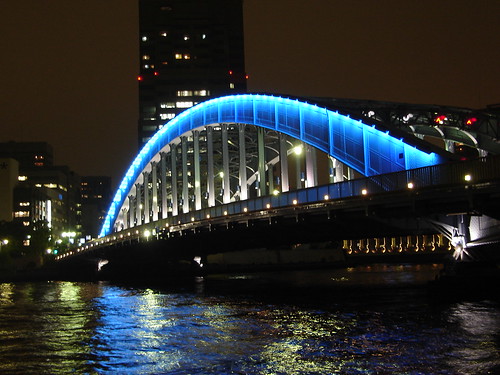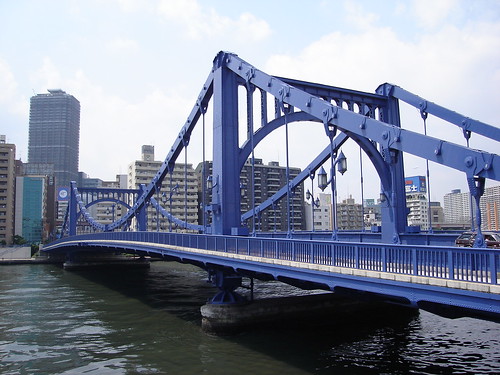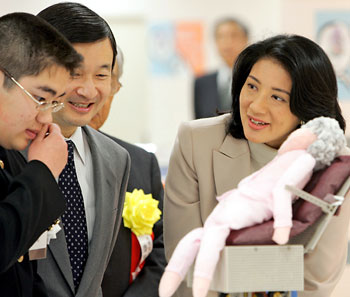 I was just wondering why there are is so much news being created by the Japanese right wing, while the hard core left wingers never even seem to make the paper. Since the Red Army organization was eradicated in the late 80s, Japan has seen several incidents of terrorism and pseudo-terrorism (assassination, sarin gas incidents, death threats, arson, etc.) committed by right wing extremists and religious wackos that live in a universe entirely distinct from the political spectrum, but left wing activity seems to be mainly limited to retirees having picnics. Hence my surprise when I noticed this article, which is actually from a month ago, and yet I somehow failed to notice.
I was just wondering why there are is so much news being created by the Japanese right wing, while the hard core left wingers never even seem to make the paper. Since the Red Army organization was eradicated in the late 80s, Japan has seen several incidents of terrorism and pseudo-terrorism (assassination, sarin gas incidents, death threats, arson, etc.) committed by right wing extremists and religious wackos that live in a universe entirely distinct from the political spectrum, but left wing activity seems to be mainly limited to retirees having picnics. Hence my surprise when I noticed this article, which is actually from a month ago, and yet I somehow failed to notice.
Japanese leftist group claims responsibility for blast near US base
A Japanese extreme left-wing group has claimed responsibility for a small explosion near a US army base outside Tokyo ahead of US Vice President Dick Cheney’s visit to Japan.
The group, calling itself the Revolutionary Army, said in a statement to media organisations here that the blast was an “angry blow of an iron hammer” at Washington’s plan to increase US troops in Iraq.
“It is an preemptive attack to stop Vice President Cheney’s visit to Japan,” the statement added, attacking moves to strengthen the US-Japan military alliance.
Cheney is scheduled to arrive here next Tuesday on a three-day visit during which he is expected to tour the US naval base in nearby Yokosuka.
The Metropolitan Police Department said Saturday they thought the group was a faction of a militant left-wing group called Kakurokyo (The Revolutionary Workers’ Council), known for a series of attacks using crude home-made incendiary devices in protest at the US military presence in Iraq.
[…]
This is the first I recall hearing about any left wing bombing attacks in Japan in recent years, but it is certainly more believable than the “Al-qaeda in Japan” theory that US officials suggested. Of course, the fact that kakurokyo took credit for the attack helps.
Below is an actual wanted poster for members of the Kakurokyo (革労協), from the Nagano police department.

 |
 |
|
 |
 |
As is typical with these extremist groups (left wing or right wing) there appears to be a confusing array of factions, counter factions, splinter groups and rival claimants to the same, but this wikipedia article on at least some of the people calling themselves kakuryokyo (specifically the “liberation faction”) actually does list some crimes over the past few years of which they are accused. According to the article, there were a total of 8 explosive related attacks, beginning in April of 2002, when they planted a timed explosive device in a train of the Keisei network. There have also been 7 crude missile attacks on US military bases in Japan, beginning with one in 2002, three in 2003, two in 2004, and then in 2007 the one mentioned in the Yahoo news article linked to above.
The early attack incidents are discussed in slightly more detail in this 2003 Ministry of Justice white paper, which for some reason creepily includes discussion of these criminals with attempts by peaceful anti-war groups to increase collaboration with peaceful left wing anti war groups in other countries, such as US based A.N.S.W.E.R. and the UK Stop the War Coalition.
The same MOJ document ends with a discussion of the “continuing threat” of the Japanese Red Army, which it says former supports of have formed the group “Movement Solidarity,” who are responsible for the formation of JAPAC, the Japan-Palestine Project Center. According to this report, “Movement Solidarity” had held a JAPAC conference at which former Red Army members said that they would “Maintain the meaning of the ‘Battle of Lod’ in the joint Palestinian struggle, carry on that sacrificial spirit, and continue with all their power to hammer out the direction of joint Palestinian activities relevant today, as strengthening the bonds of solidarity with the people.” The “Battle of Lod” refers to what is more commonly known as the 1972 Lod Airport Massacre, in which three Japanese Red Army members engaged in a suicide attack in support of the Palestinian cause. Some people believe that this attack was inspired by the Japanese kamikaze suicide squads of World War II, and that it in turn inspired Palestinian suicide bombing, that has now became a widespread feature in guerrilla insurgencies throughout the Middle East region and beyond.
The report also mentions that several Red Army are still wanted by the police (as of 2003, but I do not believe the situation has changed), and that one Bando Kunio had been reported as hiding out in Negros Island in the Philippines.
On a related note, Red Army member Yu Kakumura, who was arrested in 1986 carrying pipe bombs in his car while driving on the New Jersey turnpike is reportedly schedule to be released April 18 of this year. According to this decision of the Tenth Circuit US Court of Appeals on October 31, 2006 in response to a motion filed by Kakumura’s attorney:
He filed an application for a writ of habeas corpus pursuant to 28 U.S.C. § 2241 challenging the method by which the Bureau of Prisons (BOP) calculates and awards good conduct time (GCT). Under the BOP’s method, Kikumura’s release date would be April 18, 2007. Employing the method Kikumura advocates, he would be released from prison on November 17, 2006, as he is a model prisoner and has received the maximum amount of GCT that he could earn.
The request for early release for “good conduct time” was denied, which implies that he will be released on this coming April 18.




